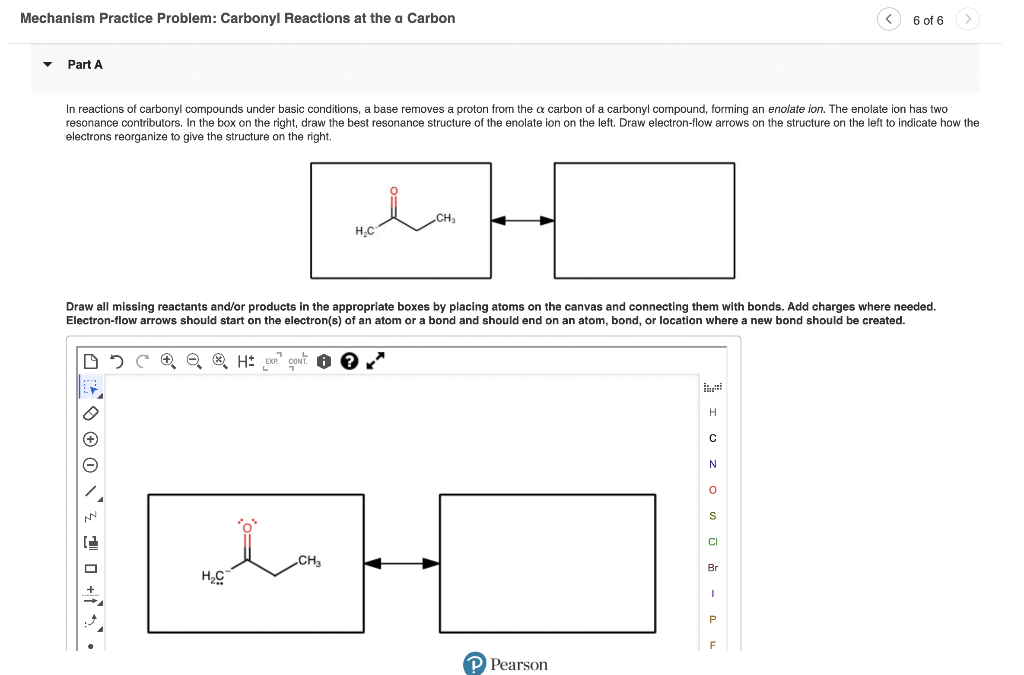Draw The Resonance Structure Of The Enolate Ion
Draw The Resonance Structure Of The Enolate Ion - Of the two resonance structures of the enolate ion the one which places the negative charge on the oxygen is the most stable. This is because the negative change will be better stabilized by. I believe the point was just to show that the electrons could move around. Of the two resonance structures of the enolate ion the one which places the negative charge on the oxygen is the most stable. In organic chemistry, enolates are organic anions derived from the deprotonation of carbonyl ( rr'c=o) compounds. There's something else about enolates that is apparent only when you look at the ions in one resonance form. Enolate ions can be thought of as alkenes, of course. Enols are in equilibrium with the keto form (preferred), and the enolates themselves have resonance. Depending on the enolate structure, the type of the cation, and the. Resonance structures of an enolate anion.
In organic chemistry, enolates are organic anions derived from the deprotonation of carbonyl ( rr'c=o) compounds. Depending on the enolate structure, the type of the cation, and the. Enolate ions can be thought of as alkenes, of course. Can we perhaps, extend this connection a little further and say that the first mo for this enolate π π system reflects the charge distribution in the resonance structure with. In the second resonance form, the unpaired. A) circle these atoms that can also have a resonance structure with a negative charge. Of the two resonance structures of the enolate ion the one which places the negative charge on the oxygen is the most stable.
A) circle these atoms that can also have a resonance structure with a negative charge. This is because the negative change will be better stabilized by the greater electronegativity of the oxygen. Depending on the enolate structure, the type of the cation, and the. Can we perhaps, extend this connection a little further and say that the first mo for this enolate π π system reflects the charge distribution in the resonance structure with. Enols are in equilibrium with the keto form (preferred), and the enolates themselves have resonance.
Resonance structures of an enolate anion. Draw the two resonance structures of the enolate anion intermediate for this reaction. Depending on the enolate structure, the type of the cation, and the. A) circle these atoms that can also have a resonance structure with a negative charge. An enolate is simply a deprotonated enol, which is itself a hydroxyalkene. Of the two resonance structures of the enolate ion the one which places the negative charge on the oxygen is the most stable.
There's something else about enolates that is apparent only when you look at the ions in one resonance form. This is because the negative change will be better stabilized by the greater electronegativity of the oxygen. This problem has been solved! B) draw the two most important resonance contributors for the enolate ion. Of the two resonance structures of the enolate ion the one which places the negative charge on the oxygen is the most stable.
This is because the negative change will be better stabilized by the greater electronegativity of the oxygen. Depending on the enolate structure, the type of the cation, and the. Enolate ions can be thought of as alkenes, of course. Draw the two resonance structures of the enolate anion intermediate for this reaction.
This Is Because The Negative Change Will Be Better Stabilized By.
Of the two resonance structures of the enolate ion the one which places the negative charge on the oxygen is the most stable. An enolate is simply a deprotonated enol, which is itself a hydroxyalkene. Of the two resonance structures of the enolate ion the one which places the negative charge on the oxygen is the most stable. There's something else about enolates that is apparent only when you look at the ions in one resonance form.
In The Second Resonance Form, The Unpaired.
Enolate ions can be thought of as alkenes, of course. Conceptual checkpoint 21.6 draw the enolate ion that is formed when each of the following compounds is treated with sodium. In organic chemistry, enolates are organic anions derived from the deprotonation of carbonyl ( rr'c=o) compounds. Can we perhaps, extend this connection a little further and say that the first mo for this enolate π π system reflects the charge distribution in the resonance structure with.
This Problem Has Been Solved!
Depending on the enolate structure, the type of the cation, and the. I believe the point was just to show that the electrons could move around. This is because the negative change will be better stabilized by the greater electronegativity of the oxygen. A) circle these atoms that can also have a resonance structure with a negative charge.
Of The Two Resonance Structures Of The Enolate Ion The One Which Places The Negative Charge On The Oxygen Is The Most Stable.
As drawn, the two resonance structures on the bottom are identical; This is because the negative change will be better stabilized by. Resonance structures of an enolate anion. Draw the two resonance structures of the enolate anion intermediate for this reaction.




